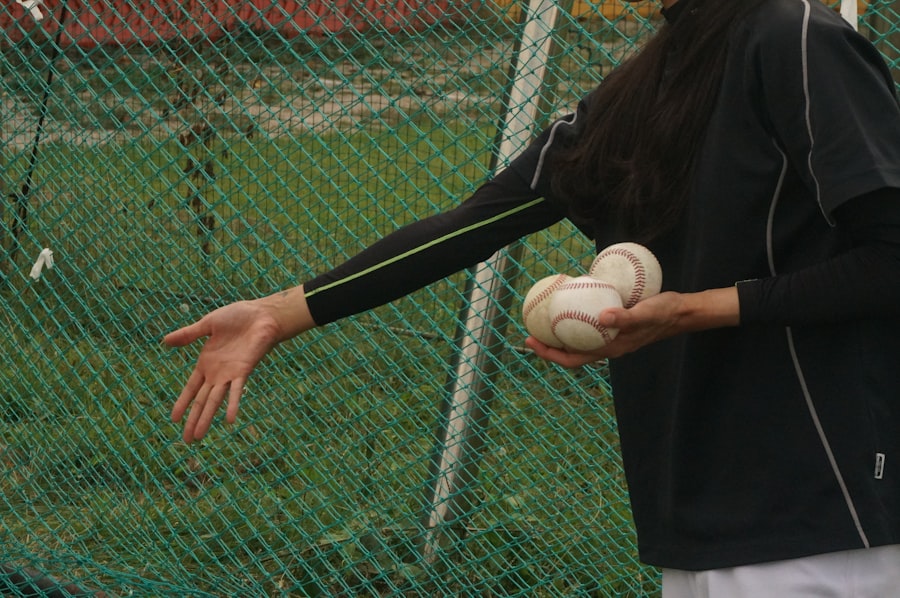The Ultimate Guide to Softball Success
Description
Softball is a bat-and-ball sport that shares many similarities with baseball but has its own unique set of rules and characteristics. Originating in the late 19th century, softball has evolved into a popular recreational and competitive sport played worldwide. The game is typically played on a diamond-shaped field with four bases, and it can be played in various formats, including fast-pitch, slow-pitch, and modified pitch.
Each format has its own set of rules regarding pitching styles, base running, and game duration, making it essential for players to understand the specific nuances of the version they are playing. The objective of softball is straightforward: teams take turns batting and fielding, with the batting team attempting to score runs by hitting the ball and running around the bases. A run is scored when a player successfully reaches home plate after touching all four bases in order.
The game is played between two teams, typically consisting of nine to twelve players, depending on the format. Each team has a designated pitcher who throws the ball to the batter, and the fielding team positions players strategically around the field to catch or field the ball. Understanding the basic rules, such as strikes, balls, and outs, is crucial for players to navigate the game effectively.
Key Takeaways
- Softball is a team sport played with a bat and a ball, with the goal of scoring runs by hitting the ball and running around bases.
- Essential skills for softball players include throwing, catching, hitting, and base running, as well as agility, speed, and strength.
- Building a strong team in softball requires effective communication, collaboration, and trust among players.
- Mental toughness and resilience are crucial in softball, as players must be able to handle pressure, setbacks, and adversity.
- Training and conditioning are essential for peak performance in softball, including strength training, agility drills, and endurance exercises.
Essential Skills for Softball Players
To excel in softball, players must develop a diverse set of skills that encompass both offensive and defensive play. Hitting is one of the most critical skills for any player, as it directly impacts a team’s ability to score runs. A proficient hitter must possess good hand-eye coordination, timing, and an understanding of pitch types.
Players often practice hitting off a tee or against live pitching to refine their swing mechanics and develop power and accuracy. Additionally, understanding how to read pitchers and anticipate pitch types can give batters a significant advantage at the plate. Fielding is another essential skill that requires agility, quick reflexes, and strong decision-making abilities.
Infielders must be adept at fielding ground balls, making accurate throws to first base, and turning double plays. Outfielders need to track fly balls and make quick judgments about whether to catch or let the ball drop. Catchers play a pivotal role in both defense and communication; they must be skilled at blocking pitches in the dirt, throwing out base runners, and calling plays.
Each position on the field requires specialized skills that players must hone through consistent practice and game experience.
Building a Strong Team: Communication and Collaboration

Effective communication is the backbone of any successful softball team. Players must be able to convey information quickly and clearly during games to ensure that everyone is on the same page. This includes calling for fly balls, signaling plays, and providing feedback during practice sessions.
Non-verbal communication also plays a significant role; players often use gestures or eye contact to coordinate movements without alerting the opposing team.
Collaboration extends beyond verbal exchanges; it involves understanding each player’s strengths and weaknesses and leveraging them for the team’s benefit.
For instance, infielders must work together to cover bases during a steal attempt, while outfielders need to communicate about who will take charge of catching a fly ball in a crowded area. Building strong relationships among teammates enhances overall performance and creates a positive atmosphere that encourages growth and development.
Mental Toughness and Resilience in Softball
| Metrics | Definition | Importance |
|---|---|---|
| Confidence | The belief in one’s ability to succeed | Boosts performance and reduces anxiety |
| Adaptability | The ability to adjust to changing situations | Helps in handling unexpected challenges |
| Resilience | The capacity to recover from setbacks | Allows players to bounce back from failures |
| Mental Focus | The ability to concentrate on the task at hand | Improves decision-making and performance |
Mental toughness is an often-overlooked aspect of athletic performance that can significantly influence a player’s success in softball. The ability to maintain focus under pressure, bounce back from mistakes, and stay motivated throughout a long season is crucial for athletes at all levels. Players frequently face challenging situations, such as striking out in a crucial moment or making an error that leads to an opponent’s run.
Developing mental resilience allows players to learn from these experiences rather than dwell on them, fostering a growth mindset that can lead to improved performance over time. Coaches play an essential role in cultivating mental toughness within their teams. They can implement strategies such as visualization techniques, mindfulness exercises, and goal-setting practices to help players build confidence and cope with stressors associated with competition.
For example, encouraging players to visualize successful at-bats or defensive plays can enhance their self-belief when they step onto the field. Additionally, fostering an environment where mistakes are viewed as learning opportunities rather than failures can empower players to take risks and push their limits.
Training and Conditioning for Peak Performance
To achieve peak performance in softball, athletes must engage in comprehensive training regimens that encompass strength, speed, agility, and endurance. Strength training is vital for developing the muscle power necessary for hitting the ball hard and throwing accurately over long distances. Exercises such as squats, lunges, and resistance band workouts can help build lower body strength, while upper body workouts focusing on shoulders and arms enhance throwing capabilities.
Speed and agility are equally important in softball, as players need to react quickly to balls hit in their direction or sprint around the bases. Incorporating sprint drills, ladder exercises, and cone drills into training routines can improve footwork and overall speed on the field. Endurance training is also essential; longer practices or games require players to maintain their energy levels throughout.
Incorporating cardiovascular exercises like running or cycling into training schedules can help athletes build stamina for those critical late-game moments when fatigue sets in.
Strategies for Success: Offense and Defense

Offensive Strategies
On offense, teams often utilize tactics such as bunting or stealing bases to create scoring opportunities. Bunting can be particularly effective when there are runners on base; it forces the defense to make quick decisions while allowing faster runners to advance into scoring position. Additionally, understanding when to take risks—such as sending a runner home from third base—can be pivotal in close games.
Defensive Positioning
Defensively, positioning players correctly based on the batter’s tendencies is crucial for minimizing scoring opportunities for opponents. Coaches often analyze opposing teams’ batting averages against different types of pitches or defensive alignments to determine optimal positioning strategies.
Defensive Plays and Tactics
For instance, if a particular batter consistently hits ground balls to the right side of the field, shifting infielders toward that direction can increase the likelihood of making an out. Furthermore, employing defensive plays like cut-offs or relays can help teams efficiently manage base runners while minimizing errors.
Overcoming Challenges and Adversity in Softball
Every athlete faces challenges throughout their careers, whether it’s dealing with injuries, facing tough opponents, or experiencing slumps in performance. In softball, overcoming adversity requires resilience and determination from both individual players and teams as a whole. Injuries can be particularly disheartening; however, athletes who approach recovery with a positive mindset often find ways to contribute off the field by supporting teammates or learning new skills during rehabilitation.
Additionally, facing strong competition can be daunting but also serves as an opportunity for growth. Teams that embrace challenges often emerge stronger by analyzing their performances against tough opponents and identifying areas for improvement. Coaches can facilitate this process by encouraging players to reflect on their experiences after games—what worked well, what didn’t—and how they can adapt moving forward.
This reflective practice not only helps athletes develop their skills but also fosters a culture of resilience within the team.
The Importance of Coaching and Leadership in Softball
Coaching plays a pivotal role in shaping the development of softball players at all levels. A good coach not only imparts technical knowledge but also serves as a mentor who inspires athletes to reach their full potential. Effective coaching involves creating structured practice plans that focus on skill development while also fostering teamwork and sportsmanship among players.
Coaches who prioritize building relationships with their athletes often see improved performance as trust grows within the team dynamic. Leadership within a softball team extends beyond coaches; it encompasses players who take initiative both on and off the field. Captains or veteran players often set examples through their work ethic, attitude, and commitment to team goals.
These leaders can motivate teammates during challenging times by providing encouragement or constructive feedback when needed. Establishing clear roles within the team helps cultivate leadership qualities among all players; when everyone understands their responsibilities, it creates an environment where individuals feel empowered to contribute positively toward collective success. In summary, softball is a multifaceted sport that requires a blend of physical skills, mental resilience, effective communication, strategic thinking, and strong leadership.
By understanding these elements deeply—ranging from fundamental gameplay mechanics to advanced strategies—players can enhance their performance while enjoying the camaraderie that comes with being part of a team.
If you’re a fan of softball, you may also be interested in checking out this article about the popular social media app TikTok here. TikTok has become a sensation among young athletes, with many softball players using the platform to showcase their skills and connect with fans. It’s a fun way to stay connected with the softball community and discover new talent.
FAQs
What is softball?
Softball is a bat-and-ball sport that is similar to baseball. It is played on a smaller field and with a larger ball.
How is softball played?
Softball is played between two teams of nine players each. The game consists of innings, with each team taking turns to bat and field.
What are the basic rules of softball?
The basic rules of softball include pitching the ball underhand, hitting the ball with a bat, running the bases, and fielding to get the opposing players out.
What equipment is used in softball?
The equipment used in softball includes a bat, a ball, gloves for fielding, helmets for batting, and protective gear for the catcher.
What are the different types of softball?
There are two main types of softball: fastpitch and slowpitch. Fastpitch softball is played with a larger ball and faster pitching, while slowpitch softball is played with a smaller ball and slower pitching.
What are the health benefits of playing softball?
Playing softball can help improve cardiovascular health, strength, agility, and hand-eye coordination. It also promotes teamwork and social interaction.
What are the different positions in softball?
The positions in softball include pitcher, catcher, first baseman, second baseman, third baseman, shortstop, and outfielders. Each position has specific responsibilities on the field.





